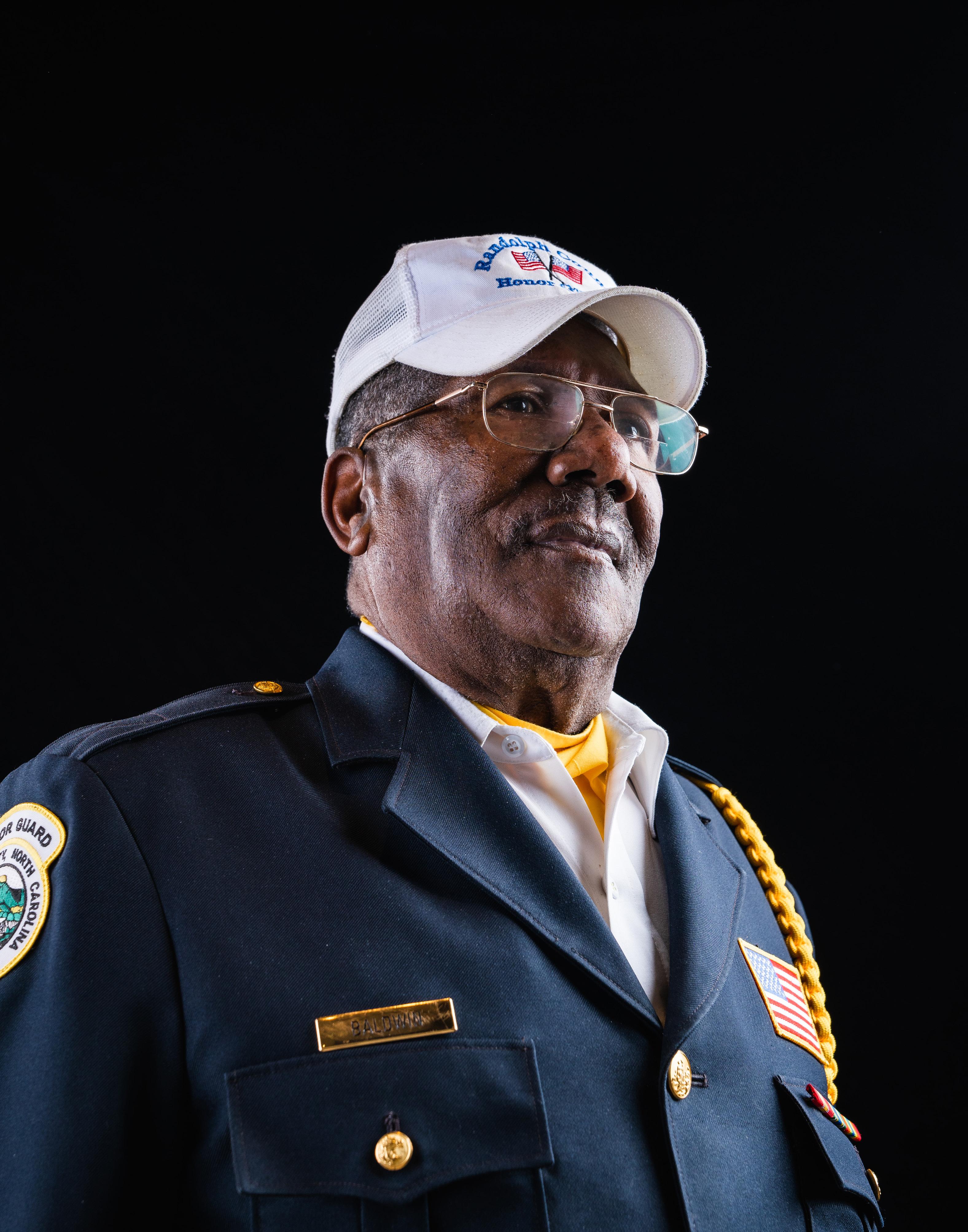

WALKING THE TALK 5 KEYS FOR THE MODERN CAREGIVERFROM OVERWEIGHT TO OVERJOYED Gratitude Veterans on Thank You for Your Service NOVEMBER 2022
– C.S. Lewis

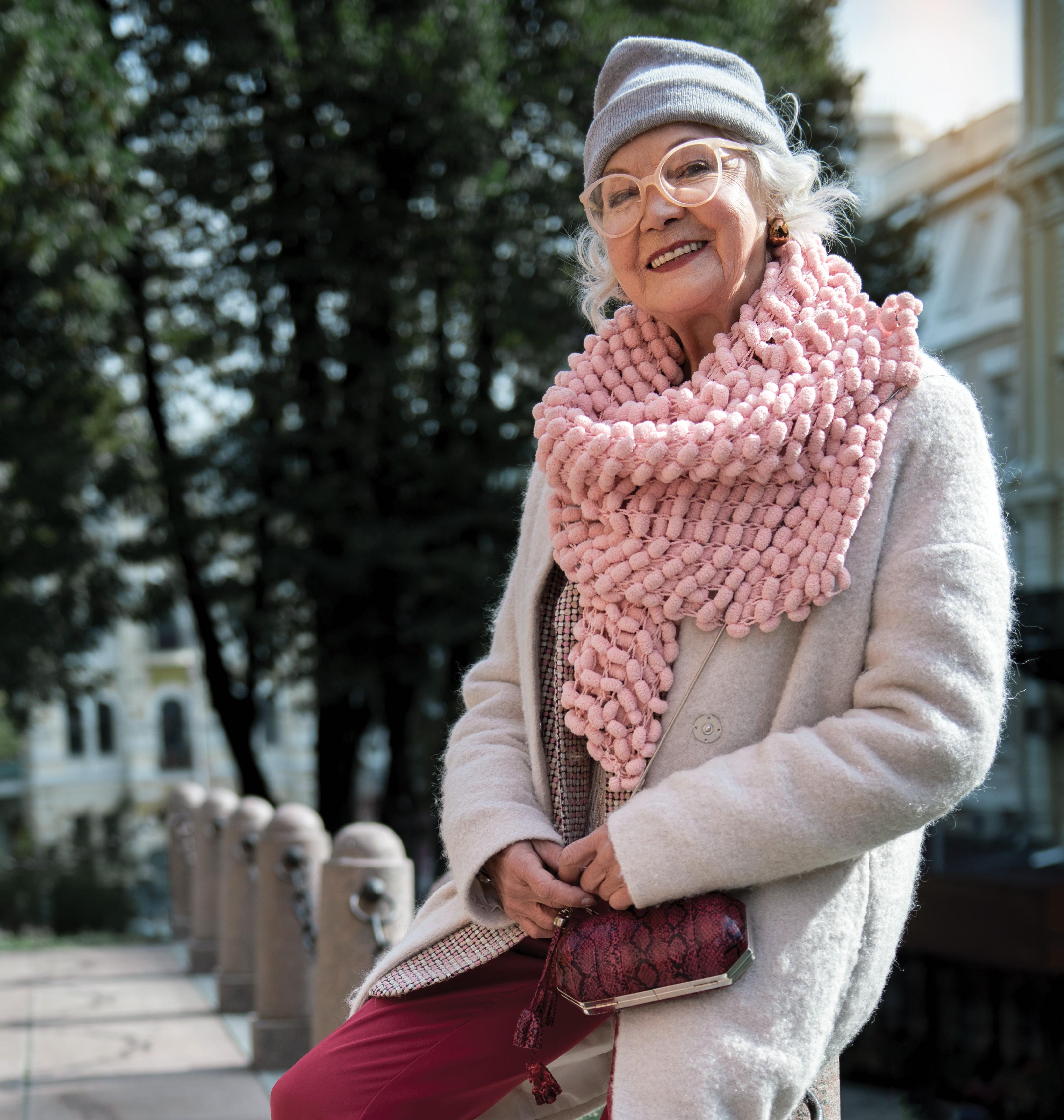
VIDEO & VOICE CALLING • EMAIL • PHOTOS • MUSIC • INTERNET • GAMES • AND MORE Enhancing the quality of life for older adults. Call 800-704-9412 or visit GrandPad.net YOU ARE NEVER TOO OLD TO SET A NEW GOAL OR TO DREAM A NEW DREAM
We’re all told the same debilitating lie that aging is an inevitable decline into disease and disability. Fountain of Youth®, a new podcast from Growing Bolder in partnership with the National Senior Games Association, smashes the negative stereotypes of aging and delivers life-transforming lessons for us all.



Hosted by masters athlete, Emmy Award-winning broadcaster, and Growing Bolder CEO Marc Middleton, Fountain of Youth shares the inspiring stories of men and women of all ages, sizes, and abilities who are redefining what’s possible and living active, engaged lives into their 80s 90s, and 100s.

GROWING BOLDER / NOVEMBER 2022 DIGEST
BOLDER AND NATIONAL SENIOR GAMES ASSOCIATION PRESENT WITH MARC MIDDLETON
GROWING
SUBSCRIBE NOW and learn the secrets to active aging! podcasts.apple.com/us
Or Your Favorite Podcast Listening Platform
open.spotify.com/show audible.com/pd




GROWING BOLDER / NOVEMBER 2022 DIGEST4 Daily Stories Online The Bold Start Check Out Our TV Shows Radio + Podcast Visit GrowingBolder.com daily for inspiring stories to help you start Growing Bolder Get a daily dose of inspiration curated from our most popular social media posts. Check your local listings or watch new episodes of "Growing Bolder" and "What's Next!" at GrowingBolder.com/tv Fast-paced, entertainment hour that will leave you excited about the possibilities in your life, now available on most podcasting platforms and GrowingBolder.com/radio-podcast. Follow us @GrowingBolder DON’T FORGET TO FIND US ON OUR SOCIAL CHANNELS CREATIVE DIRECTOR Katie Styles PRODUCTION DIRECTOR Jill Middleton EXECUTIVE PRODUCERS Lynne Mixson & Tim Killian CONTRIBUTING WRITERS Ryan Beck, Doro Bush Koch & Tricia Reilly Koch GROWING BOLDER PRESS CHIEF EXECUTIVE OFFICER Marc Middleton GENERAL COUNSEL Michael Okaty, Foley & Lardner LLP PARTNER RELATIONS Sam Koubaissi COMMENTS Contact us via social media @GrowingBolder or email us at feedback@GrowingBolder.com ADVERTISING AND MEDIA SALES For information about advertising and sponsorships, email Bijou Ikli at partnerships@growingbolder.com

5GROWING BOLDER / NOVEMBER 2022 DIGEST IN EVERY ISSUE 6 YOUR TAKE 7 NOTE FROM THE CEO 9 GROWING BOLDER WITH 10 ORDINARY PEOPLE LIVING EXTRAORDINARY LIVES 12 LIFELONG LEARNING Five Ways To Practice Gratitude 14 RECIPE Sweet Potato Risotto HEALTH 18 GRATITUDE FOR WHAT IS IN FRONT OF US Accepting What Is 26 USE PHOTO SHARING TO CONNECT WITH LOVED ONES A Tool To Preserve Each Family Story and Increase Healthspan DEFY 20 THE ART OF INSUBORDINATION Author Todd Kashdan Explains How We Can All Defy Effectively 22 FROM OVERWEIGHT TO OVERJOYED 81-Year-Old Swimmer Who Lost 100 Pounds Hopes To Inspire 24 THE OPPORTUNITY TO SAY THANK YOU Operation Gratitude Touches The Lives Of Millions CAREGIVING 16 5 KEYS FOR THE MODERN CAREGIVER An Online Summit That Delivers A Caregiving Message Unlike Any Other 36 BALANCING THE BLESSINGS & STRESS OF CAREGIVING Valuable Support Resources From Florida Blue Medicare INTERGENERATIONAL 32 WALKING THE TALK The First Annual Growing Bolder Wisdom Walk 35 VETERANS DAY Honoring Their Service And Sacrifice contents. November 2022 Head To Page 28 To Read Their Stories THANK YOU FOR YOUR SERVICE Photos by Mike Dunn for Growing Bolder
YOUR TAKE
What're you grateful for?
"All the positive supportive people in my life."
—Mary S.
"Sunshine, tea, and laughing with my son."
Jenny W. D.
"I am grateful for another day of life."
— Laurie N.
"The warmth of the sun on my face today."
Michelle M.
"A gift of beautiful yarn."



























—Mary K. S.
"Too much to list!!"
Patricia B.
"Safety and well-being."
Diane B.
"I'm thankful for everyone that lived before I was born."
GROWING BOLDER / NOVEMBER 2022 DIGEST6
Illustration by Nuthawut Somsuk via Getty Images
Ann Forbes
From the CEO
It’s all about perspective. If you allow it to be, good can be great and a little can be a lot. This month’s digital digest celebrates the importance of gratitude.
Gratitude is a positive emotion that has many benefits for our overall health and wellbeing. Much like happiness, gratitude is not simply an involuntary emotional response — it’s a state of mind and a choice that we can all make. Gratitude is the ability to look at life through a lens of appreciation and opportunity and not simply loss and limitation. It’s a glass half full mentality.

Wellness experts Doro & Tricia Koch are back to reveal how practicing gratitude is a powerful strategy for remaining happy even in the midst of life’s many challenges. You’ll learn about the race to honor America’s Greatest Generation before it’s too late, how one unhappy and unhealthy woman turned her life around with the help of a special coach and an encouraging community, how a stay-at-home mom started a national non-profit to express her gratitude, and how we’re expressing our gratitude for the many benefits of intergenerational relationships.
And I would be remiss if I didn’t take this opportunity to express our gratitude for you and your support for our mission to confront and smash ageist stereotypes and to help everyone live a life filled with health, happiness, passion, and purpose.

7GROWING BOLDER / NOVEMBER 2022 DIGEST
“Gratitude is a positive emotion that has many benefits for our overall health and wellbeing.”
Photo by Mike Dunn for Growing Bolder
Season 2 airing NOW! Catch new episodes across Florida!


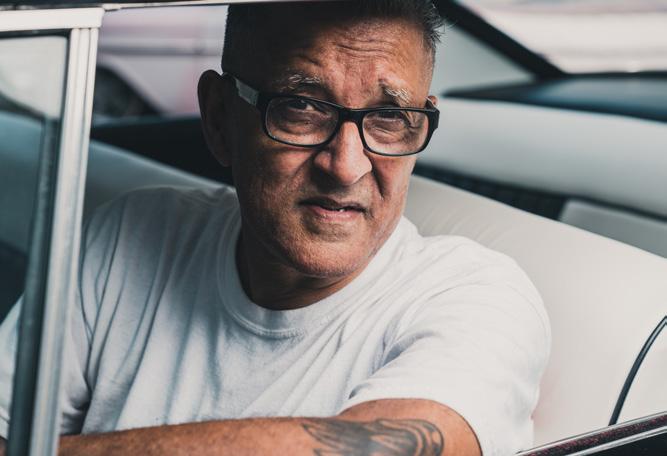









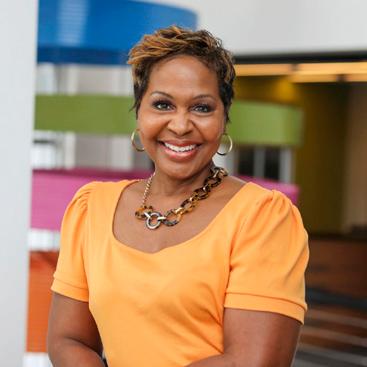




Hosted by award-winning broadcaster Marc Middleton, What’s Next! features a team of well-known Florida broadcasters and personalities, including Secily Wilson, Amy Sweezey, and Bill Shafer, all shining the spotlight on ordinary people living extraordinary lives.
What’s Next! is a jolt of inspiration that helps audiences of all ages believe that it’s never too late to pursue their passions and make a difference in their communities.
Watch all episodes at GrowingBolder.com/tv
GrowingBolder.com/Whats-NextFind out when you can watch at
GROWING BOLDER WITH David Blaine

Illusionist, endurance artist and extreme performer David Blaine has never felt more grateful. His next birthday will be his 50th and his life is coming into focus. For over two decades Blaine has been pushing the limits of life itself. It is why he’s considered by many to be the greatest magician of all time. He’s been buried underground, hung from a crane, gone without food for 44 days, and gone without breathing for 17 minutes. He’s been electrocuted, hung upside down, submerged and frozen. From each challenge he has gained something unexpected: appreciation.
“That's exactly right,” Blaine said. “For me, it is all about understanding, respecting and discovering what the body is able to do.”
He believes it can be beneficial in all our lives; that finding out what our limits are and then perhaps pushing a little further is where true accomplishment comes from.
“It is difficult to accomplish when you are comfortable,” Blaine explains. “Discomfort forces us to work harder, become creative and pushes us into a most productive and inspired state of being.”
So, how does that apply to us? “There are many ways to challenge yourself to do things you normally would not. Unleash your curiosity! It’s amazing what can happen if you do.”
He is often asked where he gets the ideas for his stunts and is quick to answer that most come from real-life examples.
“We can all learn from what others have done, that’s what I do,” he explained. “I take information from all sources, but hope and inspiration? That can only come from the experiences of others.”
It is not always easy, and quite often training himself to do things like holding his breath for 17 minutes or going 44 days without eating can be difficult and dangerous.
“Whenever your goal is to exceed the norm or push the envelope you will find many who tell you not to. You can listen to the no’s but do not let yourself be dissuaded by them. Our capabilities are greatly limited by negativity, by people telling us that we cannot,” he said. “I have learned that if we push slowly and carefully, and if we surround ourselves with knowledgeable people who inspire us, then we can accomplish so much more than we ever thought possible.”
Blaine has a philanthropic heart. Giving back is something that has been a part of his life since he began performing magic shows at juvenile centers and hospitals at the age of 18. During the pandemic he continued performing for hospitalized children online. “The greatest satisfaction as a magician is bringing joy to people who can really use it,” he said. “I’m so happy to do anything to show that I appreciate what they are all going through.”
Seeing Blaine perform live became easier than ever when for the first time he accepted a Las Vegas residency. He is performing his show nightly at Resorts World Theater through December 17. It is another example, he says, of welcoming the opportunity to take well thought-out chances. Whether it is performing a new show, deathdefying stunts, or whatever it is that you’ve always wanted to do, Blaine believes it is your obligation to try, because that is where you find passion.
“Sometimes it leads to failure, but that's okay,” he said. “Winston Churchill once said, ‘Success is the ability to go from one failure to the next with enthusiasm,' and that is what I live by. Just putting yourself in a place where you very well might fail, but you also might accomplish something significant that you’ve never done before is, well, as far as I’m concerned, that is what life is all about.”
9GROWING BOLDER / NOVEMBER 2022 DIGEST
Photo by Theo Wargo / Staff via Getty Images
49

ORDINARY PEOPLE LIVING EXTRAORDINARY LIVES ®
Tony Handler 84
When doctors told Tony Handler he had two years to live they could not have been more wrong. Or were they? In some ways, it was the end of the old Tony and the beginning of a whole new way of life for him; one filled with activity, courage and gratitude.
At the age of 45, in 1983, Handler was diagnosed with stage 4 pancreatic cancer. Doctors tried to fight it with every tool they had including multiple surgeries, chemo, and radiation to little avail. It was Handler who decided to fight it with fitness.
“Two years to live? I was desperate to think of some way to beat that prognosis,” remembers Handler. “From my hospital bed I saw the Ironman Triathlon on television and thought maybe something like that might help. It certainly didn’t seem that I had much to lose.”
While doctors were doing their thing, Handler did his. Running became part of his everyday schedule. Slowly, yet unmistakably, his body began to transform, but health challenges continued to threaten him. He has been treated for six types of cancer, needed an aortic valve replacement, had half of his thyroid removed, and has endured 22 surgeries.
“Every doctor I’ve had told me they believe my ability to recover was due to my physical conditioning,” said Handler. “It just made me more determined to stay as fit as I could.”
Handler began entering triathlons, nearly every one he could find. He could feel his body respond in an empowering way to the combination of running, cycling
and swimming. He was getting stronger, physically and mentally. His focus shifted from trying to avoid death to trying to live his life to the fullest.
When he turned 60 years old, an age where many are winding down, Handler celebrated by completing an Ironman Triathlon. “And I did it again when I was 61,” he said. “Just to prove the previous year wasn’t a fluke!”
He has completed over 300 triathlons, and he celebrated every birthday in his 70s by competing in a 1/2 Ironman. When he turned 80, he rode his bicycle 80 miles, 81 miles for his 81st and he recently rode 83 miles to celebrate turning 83 years old.
“I believe this shows that age is only a number, and that cancer patients should never give up,” he says. “I am proof there is always hope.”
He was told he had two years to live nearly 40 years ago. By focusing on his health and fitness, his fear of death gave way to a deep sense of gratitude and a desire to give back. He now holds an annual walk-run event for cancer research and created a support group for others on their cancer journey. At 83-years-old, Handler is a survivor and an inspiration.
“So many people will tell me, ‘You’re so impressive and I hope to be just like you at your age,’” he says. “To me that’s as good as a shot of adrenalin. To know I can represent hope for people, that really keeps me going!”
11GROWING BOLDER / NOVEMBER 2022 DIGEST
Photo courtesy of Chad Pregracke
“When you have major health issues you suddenly realize how unimportant many of the things you stress about really are.”
LIFELONG LEARNING
5 Ways To Practice Gratitude

GROWING BOLDER / NOVEMBER 2022 DIGEST12
Photo by Klaus Vedfelt via Getty Images
Gratitude is one of the healthiest qualities and emotions available to all. Being grateful improves relationships, relieves stress, improves self-esteem, and even boosts our immune system. While it is a big key to a happy life, thankfulness is often something that takes daily focus and practice. Here are five of our favorite ways to practice gratitude:
Start a Gratitude Journal or Jar
One of the most popular ways to practice gratitude is creating a ritual to write down the things you are thankful for every day. Some find that keeping a journal helps to focus the mind, to write down an entry from each day about what you were thankful for. Others have found success by keeping a jar in their house, where each day they drop in a scrap of paper that they’ve written a quick note on. The key is to stay consistent with your daily writing ritual, and to carve out time to sit and read back all you’ve written, whether it is at the end of every week, month or year, to reflect on all the good in your life.
Find Inspirational Media
As wonderful as technology has been to connect the modern world, it is often easy to be sucked into negative media outlets. Instead of fighting with “Twitter trolls,” reading comment-board clashes or searching for celebrity gossip, devote your time spent on media outlets that promote inspiration and thankfulness.
If you're not a subscriber to this Digital Digest every month, sign up! You’ll also get our “Bold Start”, a bite-sized, daily motivational quote delivered right to your email to begin your morning on the right foot. Or spread the inspiration and share the articles and posts with friends. Try finding a podcast focused on gratitude like Good Life Project, Ten Percent Happier or The Science of Happiness. To improve the time spent on your phone, try downloading an app designed to focus the mind on thankfulness, like the Gratitude App or Presently.
Give Back
A great way to recognize all the things to be thankful for is through volunteering and giving back to others. Not only is it a grounding experience, volunteering offers perspective to view life through someone else’s eyes. Whether it is cleaning up our planet, helping someone in need, or simply assisting a neighbor, there are volunteer opportunities in every neighborhood that can enlighten your own view on the world.
Connect With Your Spiritual Side
There are countless ways to connect with your inner spirit. It could be in a formal or informal religious community, simply walking in nature, practicing meditation, or even time spent observing the stars. Whatever best aligns with your belief system, focusing on spirituality offers time for pause and reflection, and helps to look at our surroundings and appreciate our place in the universe. It allows a chance to slow down and think about the things bigger than ourselves and form a better perspective on the things that matter most in life.
Change Your Language
No, this doesn’t mean learning Spanish, French or Portuguese. Instead, begin paying close attention to your word choices every day. Start by just making sure you say “thank you” every time someone does something for you — even the smallest gestures done by family members. Remove yourself from situations focused on gossip or complaints. When you acknowledge something negative, such as an ache or a pain in your body, try to balance it out with a positive, like identifying how nice it is to be able to be enjoying the fresh air. In the end, you are reframing your brain and how you view the world. It’ll become easier each day to become more appreciative of others when you start with the words coming out of your own mouth.
13GROWING BOLDER / NOVEMBER 2022 DIGEST
Cozy Into Fall
Sweet Potato Risotto
Ryan Beck
This sweet potato risotto is loaded with, you guessed it — sweet potatoes, but also gets added flavor from goat cheese, Parmesan cheese, brown butter and some bacon. To me this really is fall comfort food. What makes this specific recipe so great is you can substitute the sweet potato with butternut squash or pumpkin if you want a different flavor. For those that have never made risotto, it really is much easier than those cooking shows make it out to be! You've got to remember cooking shows are typically under time constraints. While this might take a little longer than a typical weeknight meal, it's worth it! So, if you're like me and love sweet potatoes and risotto, give this sweet potato risotto a try.
Ryan Beck is a second-generation foodie who grew up with family vacations that revolved around the best places to eat. He and his wife, Lauren, host Chiselandfork.com, a food and woodworking blog where you can find hundreds of delicious recipes ranging from comfort food to vegan, as well as easy DIY projects featuring Ryan’s mad woodworking skills. Follow them on Facebook or Instagram
 Photos courtesy of Ryan Beck
Photos courtesy of Ryan Beck
Sweet Potato Risotto Makes 6 Servings
INGREDIENTS
1 large sweet potato (1 lb), peeled and chopped into ½" cubes
½ tsp paprika
½ tsp chili powder
½ tsp nutmeg
½ tsp salt
¼ tsp black pepper
5 tbsp olive oil, divided
6 tbsp unsalted butter, divided
1 large shallot, diced
2 garlic cloves, minced
1 ½ cups Arborio rice
1 cup dry white wine (or add more chicken stock)
4 cups low-sodium chicken stock
2 oz goat cheese
½ cup freshly grated Parmesan cheese
8 slices bacon, cooked and crumbled
3 tbsp sage, chopped and divided
DIRECTIONS
Preheat oven to 400°F. In a large bowl combine chopped sweet potatoes with 2 tablespoon olive oil, paprika, nutmeg, salt and pepper. Spread on a baking sheet and cook for 30 minutes, tossing halfway through. Remove and mash until pureed. Set aside.
To cook the bacon, either cook in skillet or place on parchmentlined baking sheet and cook for 20 minutes in oven at 400°F. Remove, let cool and crumble.
In a medium, heavy saucepan, melt 3 tablespoon butter and 3 tablespoon olive oil over medium heat. Add the shallot and saute until tender but not brown, about 3 minutes. Add garlic and cook for 30 seconds. Add the rice and stir to coat with the butter and oil and cook for about 1 minute.
Deglaze the saucepan with white wine, and simmer over low heat until almost all of the wine has been absorbed. Add ½ cup warm chicken stock and simmer until the stock has almost completely evaporated, about 3 minutes. Continue cooking the rice, adding the stock ½ cup at a time, stirring constantly and allowing each addition of the stock to absorb before adding the next, until the rice is tender but still firm to the bite and the mixture is creamy, about 20 minutes.
While cooking risotto, heat small skillet over medium heat. Add remaining 3 tablespoons butter and cook until browned and fragrant, about 2-3 minutes. Add 2 tablespoon sage and cook for 30 seconds. Remove from heat and set aside.
Stir in 1 cup of the sweet potato puree, goat cheese, Parmesan cheese and brown butter. Serve topped with some chopped sage, extra Parmesan cheese and bacon.

15GROWING BOLDER / NOVEMBER 2022 DIGEST
5 Keys For the Modern Caregiver

Every November, the United States celebrates National Family Caregivers Month, to recognize the important role that 53 million American caregivers have and the invaluable, instrumental support they provide to loved ones in need. These selfless individuals provide an estimated $500 billion in unpaid care every year. According to the National Alliance for Caregiving, nearly 26% of Americans report caring for someone with dementia or Alzheimer’s disease.
Growing Bolder doesn't ignore the realities of aging. Caregiving can be frustrating and difficult to navigate. It can strain relationships and stretch finances. But it can also be one of life’s greatest blessings, allowing us to create precious moments of joy for loved ones in our care when we learn to celebrate what remains instead of solely focusing on what’s been lost.
To aid those in their own caregiving journey with valuable insight and practical tips to relieve stress and manage difficult decisions, Growing Bolder created an online summit unlike any other: The Art of Caregiving Headlined by renowned caregiving author and expert Amy O’Rourke, this free, hour-long program will change the way you view one of life’s most universal, important and rewarding relationships, and help you push the boundaries of possibility for those in your care.

GROWING BOLDER / NOVEMBER 2022 DIGEST16
America’s Advocate for Caregivers and Families with Amy O'Rourke
Within The Art of Caregiving online summit, O’Rourke explained her 5 keys for the modern caregiver:
1. Understand The Fragile Years
“It’s a life stage. You'll see us slowing down. You'll see a reduction in activities. I think about my dad golfing five days a week, down to three days a week. And then it goes to giving up some independence, and more reminiscing and looking back,” O’Rourke explained. “It's a natural stage. When I would meet children, they would say, ‘I can't believe this, I wasn't expecting this.’ I'm thinking, ‘Oh, you need to know this is normal.’ Once they learn that it's normal, it calms everything down and then they can really be present.”
2. Minimize Medical Intervention
“When you're in the fragile years, it’s key to find out what is important to the older adult. Do they want to watch TV? Do they want to walk? What do they want to do?” O’Rourke explained. “Then when you're interfacing with the acute medical systems, if one of those treatments is going to interfere with that love of what they want to do, don't do it. Because your priority is, how do they want to function? So ‘less is more’ becomes the key in this time of life, because you could actually lower the number of years they’re going to live, but also increase the quality. They could have surgery and end up in bed and never get back out of bed.”
3. Manage Expectations
“Everybody has anxiety, and everybody has expectations that they want met, and they usually collide. What's realistic? If you want your mom or dad to go to the gym six days a week, is that realistic?” asked O’Rourke.
“Typically, the mistake that caregivers make is they want to make a solution that's too big, too much for the older adult to really sustain. Example: 'Mom is falling. I want her to move to assisted living so she will stop falling.' That's extreme. And people fall in assisted living. So, it's an extreme solution and it's too much, too fast, for the older adult to even absorb because they have their own expectations.”
4. Manage Your Energy
“I was in a meeting with a daughter who's crying her eyes out. She's working full time, her dad lives across the street, her mom's in a nursing home and she hasn't stopped any of her normal activities. She's sobbing from fatigue, but she hasn't really learned how to manage her own energy. She needs help with her dad, she needs help with her mom, she needs help with herself,” O’Rourke revealed.
“By the end of our meeting, she could see that she couldn't sustain all the things she was doing, because you only have a limited amount of energy in a day. And she felt tremendous relief knowing ‘I don't have to walk around so fatigued all the time.’ Because what happens is they get mad, and they don't want to get mad at the person they're caring for.”
5. Knowing What To Do When All Else Fails
"It’s for people to realize that all their interventions, all their help and support might not get their parent to where they need to be. So while you wait, you investigate areas like home care, nursing homes, assisted living, You find out all the support ahead of time and you wait and you realize that when the crisis hits, you've done all your research and you'll be there for them,” said O’Rourke.
“Don't leave your parent because they're not doing what you think they should do. Just continue to be there and don't lose that connection. You just have to let go of, ‘you're not getting what you want.’”
CLICK HERE to watch the entire Art of Caregiving Online Summit and access our downloadable e-books, resources & more.

17GROWING BOLDER / NOVEMBER 2022 DIGEST
Photo by Igor Alecsander via Getty Images
Growing Bolder contributors Doro Bush Koch and Tricia Reilly Koch are sisters-in-law who founded the wellness company BB&R, Bright, Bold and Real over a decade and a half ago with a very clear goal: to share with others what they’ve learned about mindfulness and holistic living with the intention that everyone begin to live their best life. Learn more about their retreats, workshops, courses and popular Health Gig podcast at bbrconsulting.us

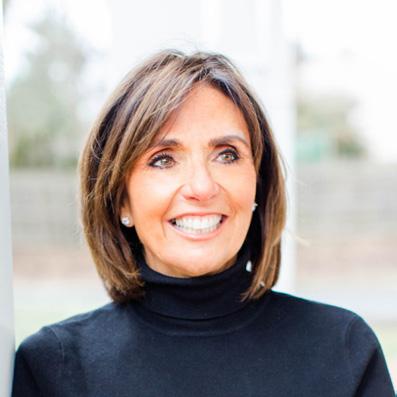

Gratitude For What is in Front of Us
Accepting What Is
In our work creating wellness experiences, we frequently see ourselves in the role of imparting wisdom. And yet, what keeps us true to our message — what helps us remember how important gratitude is to our whole health — are the moments when we are graced with lessons from others.
At a recent retreat, we were working with a sommelier at a resort. He loved his work with wine despite the fact that he was in recovery, an active participant in Alcoholics Anonymous. When talking about optimism vs. pessimism, he told us, “I don’t see the glass as half empty or half full. I’m just grateful for the glass.”
For years we’ve been teaching about how cultivating an attitude of mindfulness can help us be present in — and grateful for — the moment, and how this presence leads to better health and happiness. To hear the way this man had come through addiction to a place of acceptance reminded us to practice what we preach. Listening to him was a gift, a call for us to be open.
Gratitude is a choice. It’s a muscle that needs strengthening through regular practice. There are many ways to do this, from journaling to prayer to making lists or more active practices like giving time to help others. Different approaches will feel right to different people at different points in our lives.
In our teaching, we emphasize the importance of bio-individuality. Like any other aspect of holistic health — nutrition, exercise, sleep — our gratitude practice is specific to us.
The important thing is that we remember that gratitude is a key spoke on the wheel of wellness. It needs to be a priority, something we tend as much as our stomach and our bodies. The science is overwhelming that people
who practice being grateful have greater rates of happiness and stronger feelings of fulfillment, both of which contribute to health and vitality.
As we’ve grown older, we’ve come to understand that life is messy; it isn’t a bowl of cherries. Practicing gratitude is one of the ways we can learn to remain happy amidst the suffering and challenges. Because they will come.
We can’t control setbacks, natural disasters, or pandemics. But we can ensure that we are preparing ourselves to build resilience, like one strings beads on a necklace, by keeping up practices that make it possible for us to accept the reality in front of us.
Mindfulness is accepting what is. When we combine mindfulness with intentional practices that help build our gratitude mindset, we don’t spend life waiting for the train to come in. Rather, we’re content to take in the scene at the station.
In The Book of Joy: Lasting Happiness in a Changing World , his holiness the Dalai Lama XIV says, “The most important quality to have toward your day is gratitude for what you have experienced, even for what was hard and what allowed you to learn and grow.”
When we decide to integrate a gratitude practice in our lives, we are giving our future selves space. We are making it possible to move through life with greater ease, accepting even the challenges that arise. The more we can cultivate a grateful outlook, the more at peace we will be.
When people share about the passing of a loved one, they may share relief that they passed peacefully. We don’t need to let go of living to reach bliss. Gratitude helps us inhabit a peaceful space in our daily life. So let’s choose today to be grateful for what we have in front of us.
19GROWING BOLDER / NOVEMBER 2022 DIGEST
Photo by baona via Getty Images
Doro Bush Koch and Tricia Reilly Koch
The Art Of Insubordination
Author
Todd Kashdan
Explains How
We Can All Defy Effectively
This edition of our Digital Digest examines the many benefits of incorporating intentional gratitude in our daily lives. However, being thankful for what we have doesn’t prevent us from acknowledging ways things could be better. There is always more that can be done to create a better world and to give more of those around us reasons to be thankful too.
One key to making changes in the world is knowing how to use our voice in the right way, to make statements about what needs to change and ask questions about why things are the way that they are. One expert who understands the ways to successfully evoke change is Todd Kashdan, a professor of psychology and the author of The Art of Insubordination: How to Dissent & Defy Effectively. Kashdan acknowledges that while there is a stigma surrounding words like “insubordination” that makes others hesitant to encourage defiance, it remains a necessary act for evolution.
“It's intentionally provocative,” Kashdan told Growing Bolder. “A lot of organizations that wanted to hire me were like, ‘I don't know if I want to bring people in and teach them insubordination.’ And I was like, ‘Well, do you care about creativity? Do you care about innovation? Do you care about evolving as a group?’ Because all of these things require someone to take a single step away from the herd, away from conventional thinking.”
According to Kashdan, the starting place for effective defiance to shift culture norms is asking questions.
“As soon as we can't speak about the problems, those problems become unsolvable. As soon as we can't ask questions, then they become taboo topics, where all of a sudden they become radioactive unnecessarily. We really need to have a place in universities, in hospitals, in nonprofits, in conversations on radio, where you can actually ask questions, because nobody has a manual of what the new language is and what's appropriate or inappropriate. The only way to find out is to start talking to people and asking about what's going on.”
In addition to confronting the problems we see in society with questioning, Kashdan recommends we build a group that breaks down the barriers of age.
“You should have a social circle with: someone younger than you, that is smarter than you were at that same age; someone older than you that has wisdom and has gone through adversity and challenges, so you can extract their wisdom; and people that are in your current age cohort, so you can work together to figure out how to get through this uncertain, very difficult, adverse-ridden life,” Kashdan said.
“As long as we are age-stratified, we are not sharing the wisdoms that are passed down over the course of history. We keep having to repeat our own mistakes.
“It's going to have a little friction in the beginning because you're not going to see eye-to-eye. I really want people to understand the science of that short-term mental anguish. The payoff is long-term personal growth evolution and greater meaning in life.”
While every one of us has the potential to use our voice and set an example, Kashdan believes our elected and chosen leaders need to set the tone for overcoming the friction that comes with collaboration.
“We need the wisest, smartest people on panels with people who hold different positions to be models and exemplars that we can all work together,” he said. “It’s actually the willingness to embrace the fact that we are not going to have resolutions where society is going to be fixed today. What's so lost in the political movements today is the realization that there's a long game. It takes a while, a delayed sleeper effect, for people to flip their worldviews around.”
By surrounding ourselves with patience, diversity, and the curiosity to explore important conversations, Kashdan believes anyone can take the steps to dissent and defy effectively.
You can listen to our entire interview with Todd Kashdan’s on Growing Bolder Radio here

GROWING BOLDER / NOVEMBER 2022 DIGEST20
— Oprah Winfrey

forgiveness
“True
is when you can say, 'Thank you for that experience.'”
FOR MORE DAILY MEMES: @GrowingBolder
Photo by Emma McIntyre / Staff

From Overweight To Overjoyed
81-Year-Old Swimmer Who Lost 100 Pounds Hopes To Inspire
DeEtte Sauer has more than enough reasons to be happy today. Now 81-years-old, she’s a decorated masters swimmer, ranked number one in the entire world in the 200-meter butterfly in her age group. She’s set swimming records galore and is grateful for the close relationships with the friends and competitors she’s made at events like the National Senior Games. Sauer is a shining example of active longevity and the feats that can be achieved at any age.
But her life wasn’t always like this. When she was younger, Sauer was depressed. She battled addiction to alcohol and cigarettes well into her 30s and spiraled even deeper into depression when she tried to quit her vices.
“At age 39, I quit smoking and drinking, which I thought was going to make me healthier; but it ended up leading me straight to food,” Sauer revealed. “So, I blew up to 250 pounds. I was sedentary. I was miserable. The funny thing is I
thought, ‘Well, maybe this is just how it is at 40 and you just feel old.’ Which is crazy because my life has flipped so much that at 81, I don’t even feel old.”
Sauer started eating healthier foods. She began regular exercise and leaned on her faith. But it wasn’t until she met a special swimming coach that she says her life fully changed.

“I showed up at a pool to join a masters team [at age 58]. I couldn’t swim a lick. I don’t even understand why I showed up,” Sauer continued through tears. “There was a special coach there that said, ‘I will teach you. You can do this.’ She encouraged me, and she changed my life.”
That moment led to countless others in masters athletics. Sauer lost more than 100 pounds and began traveling to swimming events across the country. Even now, more than 20 years after that first time in the pool, she still looks to her swimming community for support.
“I swim with two other people in my lane. We constantly swim together and train together,” Sauer explained.
“One’s 12 years younger, one’s 15 years younger. I struggle every day to keep up with them. I struggle every day to make sure that I’m swimming as fast and as furiously as they are.
“If I’m not there, they call, they text asking ‘Where are you? Why aren’t you here?’ It’s being part of that community, and then the people I see here [at the National Senior Games], oh my gosh, I love them! We’re like-minded people who all are just trying to keep going at our ages.”
Sauer hopes that the example she has set will inspire multiple generations of younger adults to start their own path towards better health and wellbeing.
“I hope it inspires younger athletes. In fact, I’ve talked to some of the younger people around here and they say, ‘It’s jaw dropping! These people, I can’t believe what they can do!’ Any young person that has access to seeing this can really capture some of the spirit here. Find what does keep you going and what does keep you striving for health and vitality and living a vigorous life.”
23GROWING BOLDER / NOVEMBER 2022 DIGEST
“I showed up at a pool to join a masters team [at age 58]. I couldn’t swim a lick.”
The Opportunity to Say Thank You
Operation Gratitude Touches the Lives of Millions of Service Members, First Responders, Veterans & Volunteers
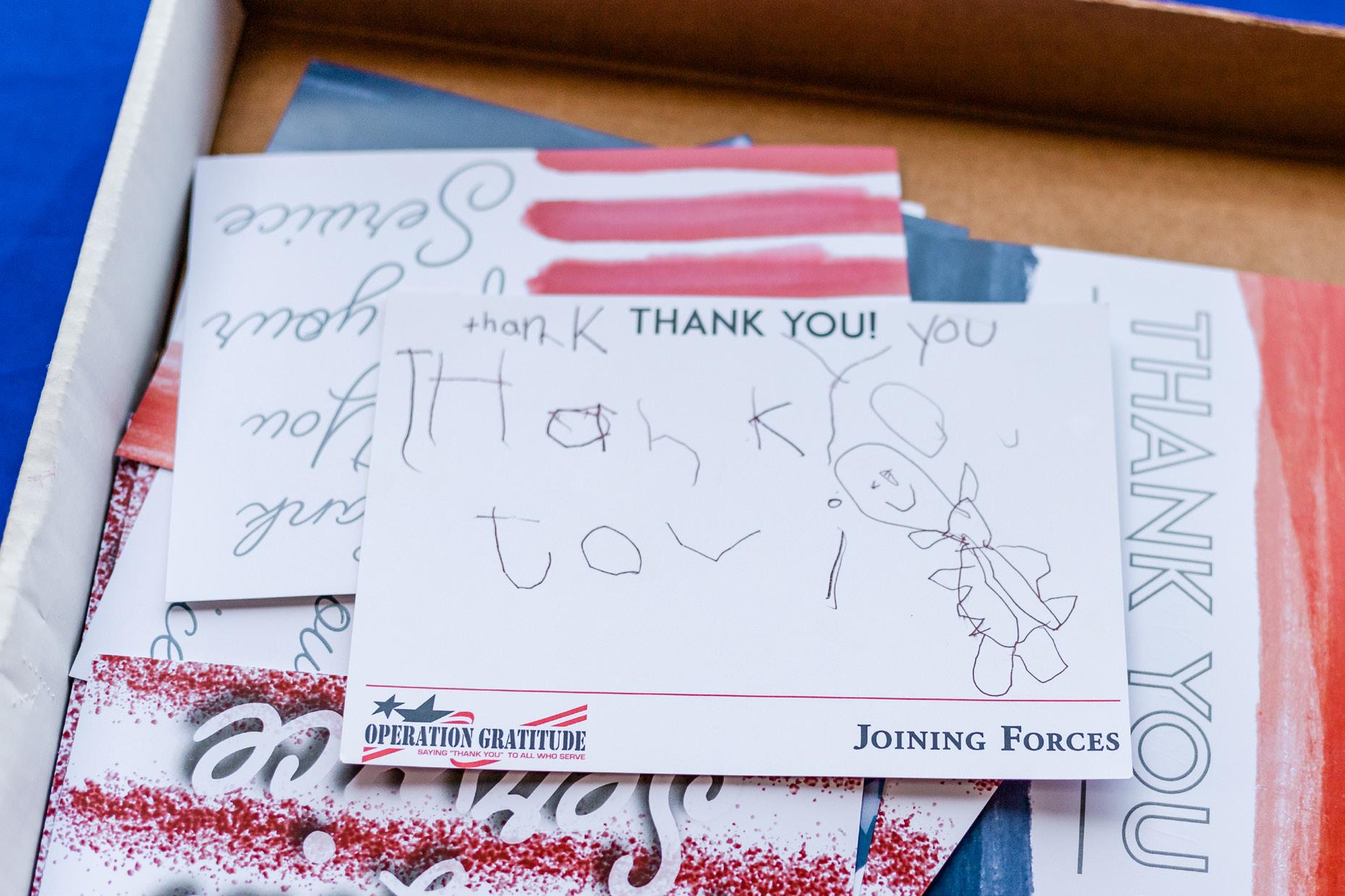
It was after the Sept. 11, 2001 terror attacks in the United States. First responders and deployed military members were putting their lives on the line to defend our country and Carolyn Blashek wanted to support them. What could one woman, a fulltime mother, do to make a difference? It turns out, a whole lot.

GROWING BOLDER / NOVEMBER 2022 DIGEST24
Operation Gratitude began in Carolyn’s living room in 2003. In the first six months she sent out 650 care packages by herself. Then she began to recruit help. Almost 20 years later, this grassroots movement has distributed over 3.5 million care packages around the world. The organization’s reach has expanded from deployed military and first responders to include veterans, military families, boot camp graduates and wounded heroes and their caregivers.
“I really wasn't thinking about starting an organization. I was just wanting to send care packages as my way of saying ‘thank you’ on just a very personal level,” Blashek shared. “By opening this up and welcoming in others to help me and to become the engine of it all, doing something in numbers more than geometrically increases the output. With the millions of Americans who participated, we were able to really accomplish amazing things.”
From the beginning the care packages struck a chord, with the organization receiving letters of gratitude from service personnel recounting how much receiving them meant. One staff sergeant wrote to share the lifesaving effect it had for a serviceman.

“They found out that he had been contemplating suicide on Christmas Eve one year, and our packages all arrived that night,” Blashek recounted. “There were letters in them from total strangers who just were thanking him and saying how much they appreciated what this service member was doing. The package was addressed to him by name, so he felt it very personally.
“In reading those letters, that service member realized, ‘Wait, there is hope and there is reason for what I'm doing, and people do recognize and acknowledge me.’ And it saved his life.” The man sought help from the chaplain and a year later had been promoted and gotten engaged.”
But the appreciation wasn’t just one way. Blashek got to witness the loop of gratitude the organization created through the care package assembly events they had early on. At the end of the day she stood by the door to thank the volunteers who had given their time assembling packages.
“I would try to shake their hands, thank them for being there and helping us out. And every single person would say, ‘No, no, no, no. Thank you for giving me this opportunity.’ And it was such a powerful moment for me to understand that this really was something much bigger… It wasn't just about saying thank you to the troops, it was also about providing the opportunity for our volunteers to express their gratitude.”
Blashek now serves as a senior advisor for the organization she founded nearly 20 years ago. As a daughter, wife, mother, and grandmother, her life is full of reasons to be grateful.
“What is gratitude? I think it's a very, very deep sense of appreciation for what we have, what we are able to do, for the freedoms that we have,” reflected Blashek. “I think it's combined with a real humility and a faith to recognize that all that we have and all that we can do and all the freedom we have are gifts from others. Whether it's from other people, whether it's from something from above, whatever people's beliefs are in that regard.
“It’s a very humbling feeling that I think is critical to having a much fuller life and to help us understand that we’re just a small part of a much greater world and we need to appreciate all that we’re given from it.”
OperationGratitude.com to find out ways to donate, volunteer or to request care packages.
25GROWING BOLDER / NOVEMBER 2022 DIGEST
Visit
“In reading those letters, that service member realized, ‘Wait, there is hope and there is reason for what I'm doing, and people do recognize and acknowledge me.’ And it saved his life.”
“
CAROLYN BLASHEK
Photos courtesy of Carolyn Blashek
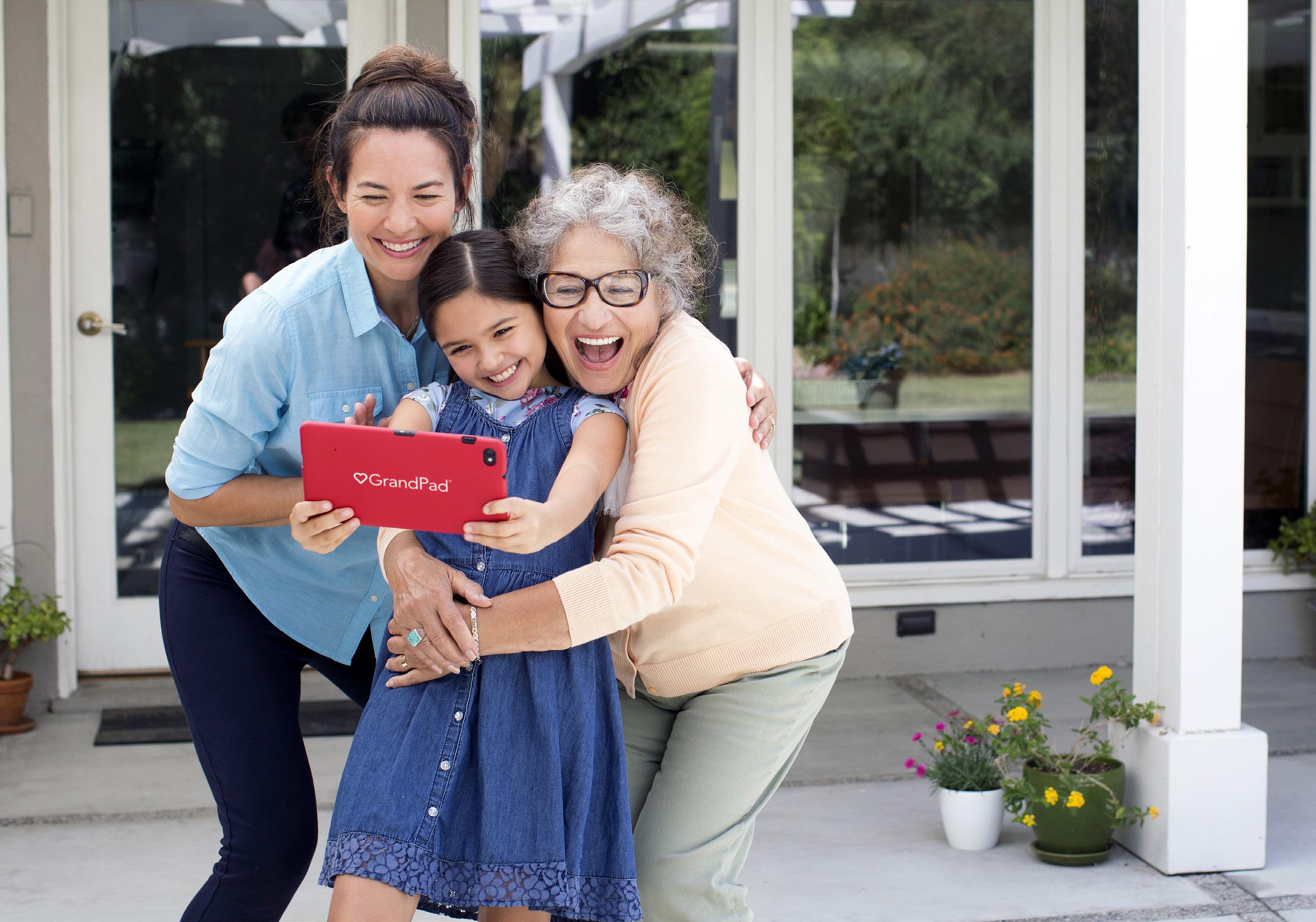
GROWING BOLDER / NOVEMBER 2022 DIGEST26 Use Photo Sharing To Connect with Loved Ones And Increase Your Health Span
Behind every family photo is a story, often one worth sharing and recounting with loved ones. Not only are we grateful for the memory itself, but we’re often so thankful a picture exists to share these cherished moments with others.
In the not-too-distant past, we relied on physical photo albums and prints to recount these events. However, as modern technology rapidly transformed the ways we take, store, and share photos, one company, GrandPad, identified an issue with older adults becoming isolated and missing out on the joys and health benefits of photo sharing.
“I was living in California in high school, and my grandparents were all in Iowa,” GrandPad Co-Founder Isaac Lien explained. “There was no good way for us to share photos of my high school sports. We couldn't send a photo of the game to them because they weren't on social media, they didn't have smartphones.
“It really caused this gap in our family because they were out of the loop. Everyone else could see what I was doing, I could see what they were doing, but only when I would go visit my grandma could I show her actual photos. So it was really essential for us to build a solution.”
GrandPad created a unique tablet specifically designed for older adults, featuring a safe, private family network to keep out scammers, apps to play games, listen to music, and take and share photos. They leaned on feedback from their Grand Advisors, a group of older adults that inspire, test and guide the development of the GrandPad tablet. The device has helped dramatically cutdown on social isolation, which can be incredibly harmful to older adults.
When any family member uploads a photo using the “companion app” on a smartphone, it instantly is viewable for the older adult on the GrandPad. But beyond just viewing a picture, the device also allows family members to comment on photos and increase social connection.
“We made it simple to leave comments on photos just by using their voice. We recognize many of our users haven't used touchscreen smartphones, or maybe it's challenging to use onscreen keys,” Lien continued.
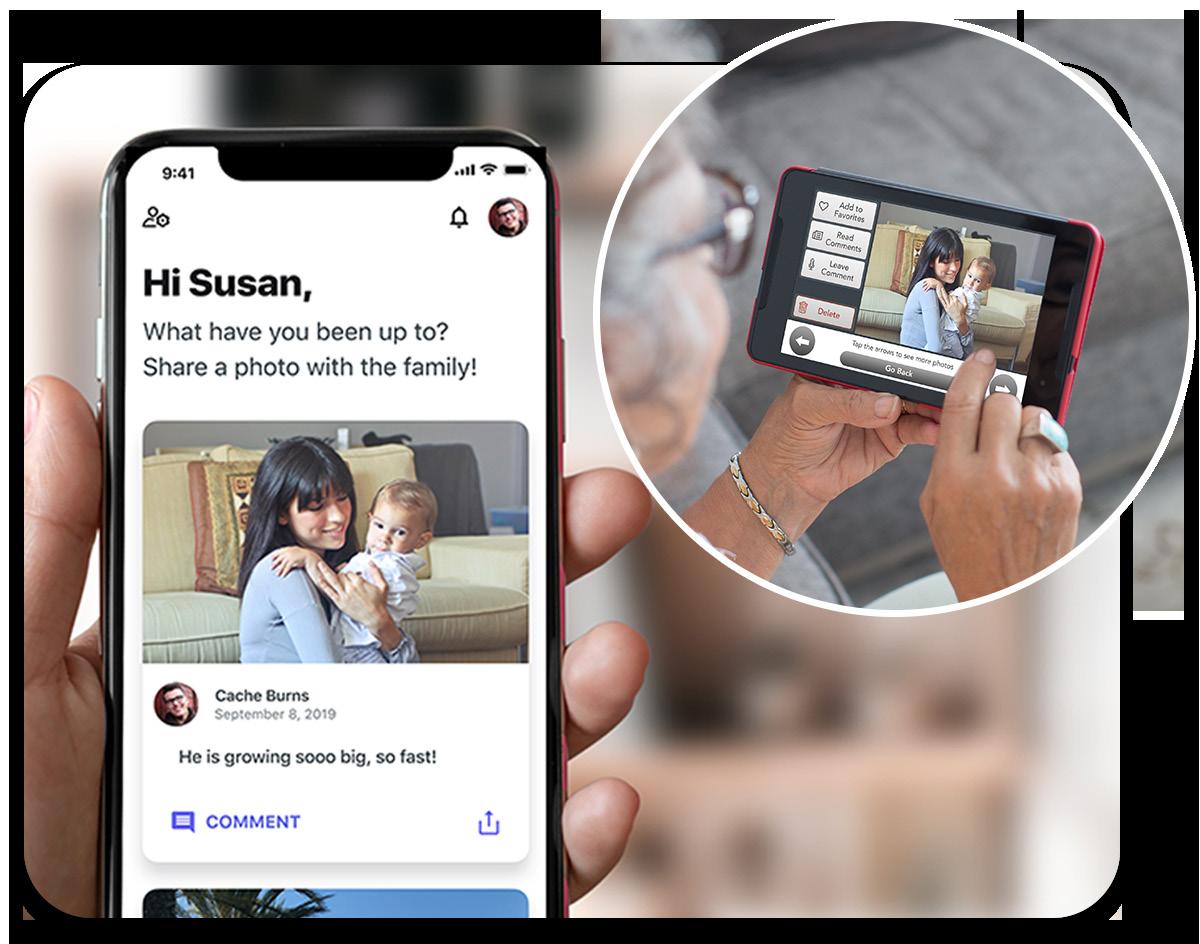
“So when my grandma saw photos of me, she could just tap that big comment button and just speak the message. It's much easier for her, but then also for me and the family, we get to hear her voice and hear that reaction that she has, so it ends up being a much richer experience for everyone involved.”
When not in use, the device functions as an ever-changing digital picture frame thanks to its slideshow function.
“We used to show off photo books when people have come over. Now you have the GrandPad sitting there that's cycling through the photos,” Justin Prate, Sr. Product Manager of Games & Engagement said. “While it rotates through all the photos that have been uploaded, if there’s new comments or photos from family, it’ll make sure you’re aware to see that”
The device also features a camera function specifically designed for older adults to capture moments from their day to share back with younger family members who are on smart phones.
“There's a big photo camera button on the home screen. After you take the photo, it's really simple, you just choose if you want to keep it just for yourself, or if you want to share it out with your family network just with one tap. Then all the commenting can happen with that conversation back and forth,” Lien said.
“What we see our users want to do is be able to just quickly capture a memory without a lot of fumbling around with complicated options and share it out. Then you can put the GrandPad away and go back to enjoying that moment you're in.”
Health Benefits of Sharing Photos
→ Photos are conversation starters to increase social interaction.
→ They provide an opportunity to learn about one another.
→ Sharing a photo is a faster and easier way to stay in touch than a phone call.
→ Looking at photos improves memory.
→ Reminiscing with photos helps recover from stress and reduces heart rate.
Health Benefits of Taking New Photos
→ Fosters social interaction
→ Provides potential for reminiscence and memory work
→ Gets you outside and active → Encourages mindfulness
→ Positive mood stimulation
To learn about Grandpad's unique features you can attend an online webinar by registering at GrandPad.net
27GROWING BOLDER / NOVEMBER 2022 DIGEST




NOVEMBER 2022 DIGEST
Thank You
For Your Service
Preserving Veterans’ Stories
When Tim Gray was 6 years old he picked up a book about World War II. Inside he found incredible tales that were both inspiring and horrific; the stories of ordinary men and women that banded together to help save the world. It made an indelible impression on Gray and documenting the stories of those who survived and what they went through ultimately became his life’s work.
“To me, that time period, the end of World War I, right through the end of World War II, was fascinating: how it shaped the world that we still live in today, how it shapes everything — who we are today, the freedoms that we have today and the borders across the world,” Gray said.
“I was really fascinated about how a generation could come together and put aside all their differences and work towards a common goal. And I think that's more relevant today than it has been since World War II,” added Gray. “We were able to put down our hatred of Democrats and Republicans and everything else and kind of figure that, ‘Hey, we're Americans. This is our job. We're going to support the president and we're going to move forward and win this war and then go on with our lives, but we're going to do it not as a political party. We're going to do it as Americans.’”
In 2006, the filmmaker began conducting mass interviews all over the world with survivors, combatants, and home front people. For those of us that haven’t been in the military, including Gray, it’s impossible to know what it’s like to be deployed overseas or to be in the midst of combat, but in listening we honor their experiences and hopefully learn from them.
“I try to get as close as I can by looking into their eyes and chronicling their stories, especially those who fought during World War II,” Gray said. “But I'll never know. I'll never know the shell shock part of it, I'll never know the PTSD part of it, of being in combat.
“I think what you need to really do with any veteran of any conflict or war is listen to their stories,” Gray said. “Don't interrupt them. Let them tell their stories. Have empathy for what they've done. Have pride in the fact that they've defended our country.”
29GROWING BOLDER / NOVEMBER 2022 DIGEST
Photos by Mike Dunn for Growing Bolder
USMC Colonel (ret) Vance Cryer served from 1991 until 2018, including six deployments to the Gulf region. Raised by his grandparents, Cryer was directly influenced to a life of service by a part of the “greatest generation.” His grandfather was a Merchant Marine in World War II, serving as an assistant anti-aircraft gunner aboard the USS Darnell and surviving its sinking by the Japanese in the Battle of Leyte Gulf.
“When you are young, you have the luxury to thinking about yourself, your wants, your desires,” said Cryer. “Once you join the service, self is just a chapter in the history books. Your focus is on the mission, the men and women who serve under you and with you. In short you figure out quickly, it is not about you.
“The beauty of this realization early is that it gives you a sense of value and purpose that is unlike anything you can find in the relentless pursuit of self-gratification,” Cryer reflected. “As you focus on serving others, you learn a lot about yourself. You learn how to focus on others’ strengths and not their weaknesses. You learn to invest yourself into the lives of others and you learn how to mentor, teach and coach those who will replace you.”
Today less than one percent of the United States population will volunteer and serve through active or reserve duty. 21-year-old Carolyn Sveden is part of that unique group, an AFROTC cadet at High Point University where she is in her senior year, majoring in chemistry. Both of Sveden’s parents served in the Air Force — her mother as a nurse and her father as a pilot.
“Hearing them talk about their military careers inspired me to continue their legacy of service to our country,” Sveden said. “Throughout my childhood, my parents reminded me of the Air Force core values: integrity first, service before self, and excellence in all we do. I am grateful for their influence and having been able to solidify these values throughout my time in AFROTC.
“The average American only sees what is highlighted in the news. Most people do not realize the full scope of the branches of the military and the positive effect that they have throughout the world,” Sveden continued. “During my time in the Air Force, I hope that I will have a positive impact on everyone that I work with or serve. As a weather officer, I am excited to see different parts of the world and take advantage of many opportunities, while supporting the overall mission.”
While a smaller number of young Americans are committing to serve, members of the oldest generation are leaving us. The median age of living World War ll veterans is now 96 years old. Capturing the perspective of these men and women is a race against time for Gray. According to the US Department of Veterans Affairs, only about 167,000 of the 16 million Americans who served in World War II are still alive today and we’re losing over 350 every day. There will be fewer than 100,000 still alive in two years, less than 50,000 in 2026, and within 20 years, they’ll all be gone.
“We're losing that ability to be able to touch and talk to
that generation that saved the world,” Gray acknowledged. “I think that's important in terms of learning, in terms of that blueprint, on how to be better people, to be better Americans, to get along, to come together to solve the problems of our country rather than be so divided. It'll be a sad day when we lose that final connection.”
In 2011 Gray founded the World War II Foundation, with the mission of educating younger generations. His documentaries air on Public Broadcasting stations across the country and are available to educators and the general public at no cost. Gray has produced 31 films to date and has another 10 in production. The interviews have taken him from the Guadalcanal to the Oval Office, to Iwo Jima, Pearl Harbor, Hawaii (10 times), Normandy, France (15 times) and Auschwitz and Treblinka Concentration Camps.
“When we teach the younger generation, we try to relate it to what they would've been doing during the war as a 17 or 18 year old or a 15 year old,” said Gray.
“These kids can't believe that somebody their age went off to fight a world war, landed on Omaha Beach on D-Day, fought in Normandy, fought through France and Holland and Belgium and into Germany, and then came home and finished their junior year of high school, or went back to their senior year of high school or started college. They can't believe that a generation did that. And that just goes to show you what this generation is capable of and what future generations are capable of when put under extraordinary circumstances.”
While Gray’s focus has been on those who survived World War II, he reminds us that every war is unique and every experience of war is as well, because every human experiences war differently.
“Every veteran who served in any war since George Washington and the Revolution, every veteran has had their own individual experience in that war or conflict that is unlike that of anyone next to them. They all see the war differently. They all experience it differently. So, no two veterans we've ever interviewed have shared the same story. They could have been in the same fox hole, they could have been fighting the same battle. They could have been in the same place at the exact same time, but their stories are interpreted differently based on who they are as human beings.”
The unique experiences of each and every veteran reinforce why it’s important to take the time to listen to each of their stories, to pause and thank them for their service, and glean wisdom from the experiences they have been through to lead us forward.
“The greatest generation managed to unify the nation to take on the challenges they faced. We too are facing global challenges,” said Cryer, currently a member of Lockheed Martin Missiles and Fire Control Advanced Programs. “Our test will be if we can set our own personal goals aside to invest and serve each other, come together in unity and make sacrificial contributions that will benefit the next generations of Americans who we will never meet.”
GROWING BOLDER / NOVEMBER 2022 DIGEST30
“As you focus on serving others, you learn a lot about yourself. You learn how to focus on others’ strengths and not their weaknesses. You learn to invest yourself into the lives of others and you learn how to mentor, teach and coach those who will replace you.”
-COLONEL (RET) USMC
Vance Cryer, 53
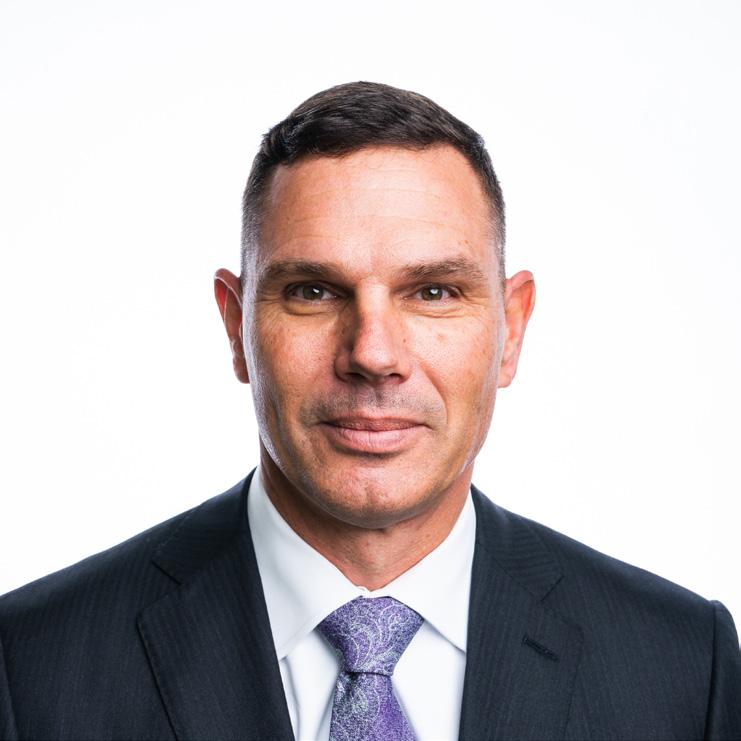

“Throughout my childhood, my parents reminded me of the Air Force core values: integrity first, service before self, and excellence in all we do. I am grateful for their influence and having been able to solidify these values throughout my time in AFROTC.”
-AFROTC CADET, HIGH POINT UNIVERSITY Carolyn Sveden, 21
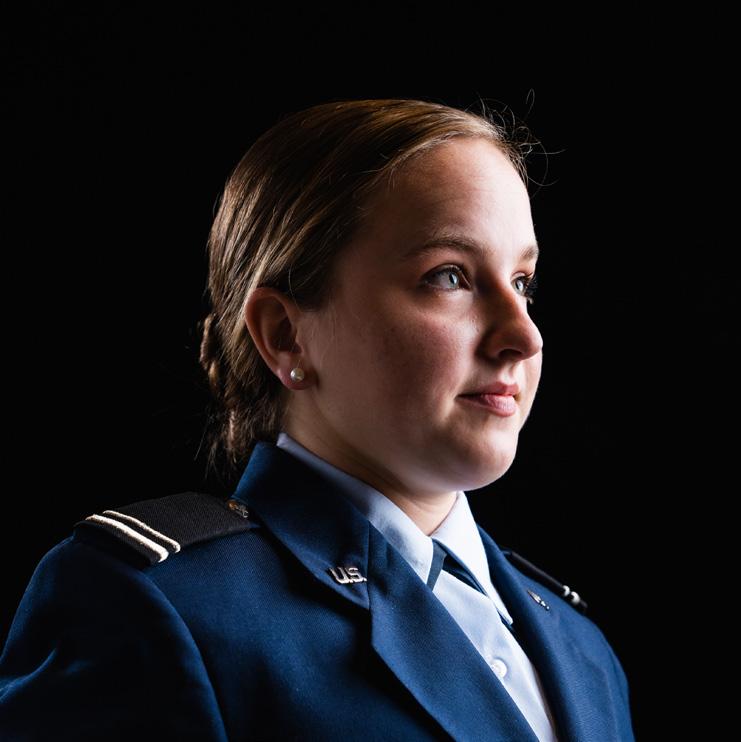
“I was really fascinated about how a generation could come together and put aside all their differences and work towards a common goal. And I think that's more relevant today than it has been since World War II.”
-FOUNDER & PRESIDENT OF THE WWII FOUNDATION
Tim Gray, 55
31GROWING BOLDER / NOVEMBER 2022 DIGEST
Photos 1 & 2 by Mike Dunn /
Photo 3 courtesy of Tim Gray
Walking the Talk
The first annual Growing Bolder Wisdom Walk
It was a beautiful morning to take a short walk with a big purpose. The first-ever Growing Bolder Wisdom Walk, in partnership with Florida Blue Medicare and Track Shack, brought together a large intergenerational, intercultural, interracial group of all ages. We had strollers and wheelchairs, infants, toddlers, teens and men and women from age 20 to 91.
Thomas Friedman, the former director of the Centers for Disease Control and Prevention calls walking, “the closest thing to a wonder drug that we have.” And he’s not alone. Doctors, researchers, and health experts from the American Heart Association, the Arthritis Foundation, Harvard Medical School, Mayo Clinic, and many others prescribe walking because it’s proven to help ease joint pain, improve immune systems, lower blood pressure and cholesterol, boost memory, maintain weight, reduce chances of getting many types of cancer, and more.
We didn’t create the Wisdom Walk just to improve our overall health and wellbeing, as important as that is. Our mission is bigger than that. We’re committed to encouraging intergenerational relationships as a way to break down

barriers and confront ageism which is widespread, unchallenged and has far-reaching negative consequences for people of all ages. Younger and older people are denied opportunities simply because of their birthdate. Among older people, ageism is directly connected to poorer physical and mental health, loneliness, depression, decreased quality of life, and premature death.
One of the greatest gifts that we can give young people is a more realistic and non-ageist view of growing older. Studies reveal that by the time they’re 4 years old, children already have a negative view of aging and research proves that those with a positive view live, on average, seven and a half years longer than those with a negative view. Not only do they live longer, but they’re also happier, healthier, and dramatically reduce their healthcare costs.
As a culture, we battle racism and sexism but ignore ageism, even though it’s the one ism that does or will affect everyone. One of the very best ways to combat all three and overcome stereotypical beliefs and prejudices is to build personal relationships. That’s what Growing Bolder’s Wisdom Walk is all about.
GROWING BOLDER / NOVEMBER 2022 DIGEST32
We had two, three and four generation families participating together, and we placed individuals and strangers into intergenerational groups. Signs were positioned throughout the course with questions designed to prompt conversation. Questions like: What do people get wrong about someone your age? What’s been your biggest embarrassment and why? What do you want to do that you haven’t done yet?
Carol Tenhoopen was walking with her daughter and grandson. “I talked a little bit when we came across one of the questions, ‘What bothers you about aging?’ I talked a little bit about my husband and his condition. He's in a wheelchair now and couldn't participate today. I talked to them about my fear of having to take care of him, but also me ending up in the same condition perhaps in the future, worrying about what will happen to me. Who's going to take care of me? And that's where Christy comes in.”
“I would love to help, Mom,” said Carol’s daughter, Christy Marchand. “I really enjoy spending every moment when I can with my mom and having my son learn from her the many things she teaches him. She's an avid reader, she's active, she's done 5Ks, I love it, and he's picking up from her.”
79-year-old Barbara Miller attended with her 80-year-old husband, Bob. “I think it's a wonderful idea because I mean, we have grandchildren, they learn from us, we learn from them, and it would be the same with this,” said Barbara. “You get a different perspective and they're all so nice. You have a lot to learn and the younger ones show it to you and they're usually surprised that we can actually move.”
48 year old Tylana Hill formed a spontaneous walking group with 19-yearold Jayd Derickson and 21-year-old Hannah Favorite.
“It was honestly a great experience,” Favorite said. “I learned a lot, definitely about growing older and communicating with other people around me and how important socializing is with people of all ages.”
“One thing Hannah said was about comparison,” Hill reflected. “Comparison, people wanting what others have or taking what others have or not wanting to share with others. It's a problem.
“I'm really overwhelmed with emotions,” Hill continued. “I did this in honor of my aunt who turned 80 today and the future is bright. I plan to try to do this at my church or even at work.”
All of the walkers were invited to pose for renowned portrait photographer Mike Dunn who captured the energy, passion, and enthusiasm of all who participated. The photos were made available to everyone at no cost; a memento of a great day and an even greater cause.




“It's great to see so many people of all ages, different backgrounds, different walks of life, just all coming together and sharing that common goal of just wanting to improve their health and stay active and that's really important to us and Growing Bolder as well,” Florida Blue Medicare Partnership Marketing Manager Lauren Ward shared.
“At Florida Blue we really want to provide a wide range of health solutions to our members and it really is about helping them achieve overall total health: mental, physical, emotional. Whether it's people coming into our centers to take advantage of the different fitness classes we offer or meet with the nurse, we just want them to know that we're here for them and we're a resource whenever they need it and however they need it.”
We didn’t just walk the walk; we talked the talk. And it’s just the start. Our hope is that these steps are the beginning of a movement that can change minds and lead to improved health and happiness for people of all ages.
“We have grandchildren, they learn from us, we learn from them.”
BARBARA MILLER
Photos by Mike Dunn for Growing Bolder

FOR MORE DAILY MEMES:
@GrowingBolder
Photo by Lucy Lambriex via Getty Images
“When gratitude becomes an essential foundation in our lives, miracles start to appear everywhere.”
— Emmanuel Dagher
Veterans Day
Honoring Their Service and Sacrifice
Veterans Day was originally celebrated as Armistice Day, marking the end of World War I on the “11th hour, of the 11th day, of the 11th month” in 1918. For that reason, it’s always celebrated on November 11th — regardless of which day of the week it falls on.
While Memorial Day honors all who died in military service, Veterans Day honors all living men and women who have served in wartime or peacetime. This makes honoring Veterans of World War ll, while we still can, an important priority.
While the percentage of US adults who are Veterans is rapidly declining because of peacetimes, 42% of all male Americans 75 years and over are Veterans.
The Villages, Florida has one of the highest concentrations of veterans of any city in America. More than 20,000 veterans of World War II, Korea, Vietnam, and the Middle East now call The Villages home, making up approximately 17% of the population. Not surprisingly, there are more than 20 Veterans groups and organizations in or around The Villages, including American Legion Post 347, the world’s largest American Legion post with over 6,500 members. These organizations provide social opportunities, help vets access benefits, get healthcare, find employment, and provide opportunities to volunteer in the community.
One of the most active and passionate groups is The Villages Honor Flight which flies veterans to Washington, D.C. to visit and reflect at their memorials. Each Veteran who takes an Honor Flight is accompanied by a guardian who travels with him or her. All Veterans are eligible to make the trips, but preference is given to the rapidly dwindling number of World War II Veterans.
Growing Bolder honors and is grateful for the service and sacrifice of all U.S. service members who selflessly put their lives on the line to keep us safe and free.

35GROWING BOLDER / NOVEMBER 2022 DIGEST
Balancing the Blessings & Stress of Caregiving

GROWING BOLDER / NOVEMBER 2022 DIGEST36
Photo by Maskot via Getty Images
Valuable Support Resources from Florida Blue Medicare
Across the United States, November is National Family Caregivers month, highlighting one of the most important and undervalued responsibilities we all face at some point. As former first lady Roselyn Carter said, “There are four kinds of people in the world — those who have been caregivers, those who are caregivers, those who will be caregivers and those who will need caregivers.”
Fifty-three million Americans provide a staggering $500 billion in unpaid care every year. With 10,000 Americans turning 70 every day, and another 10,000 turning 65 every day, millions more face the challenge of providing unpaid care every year.
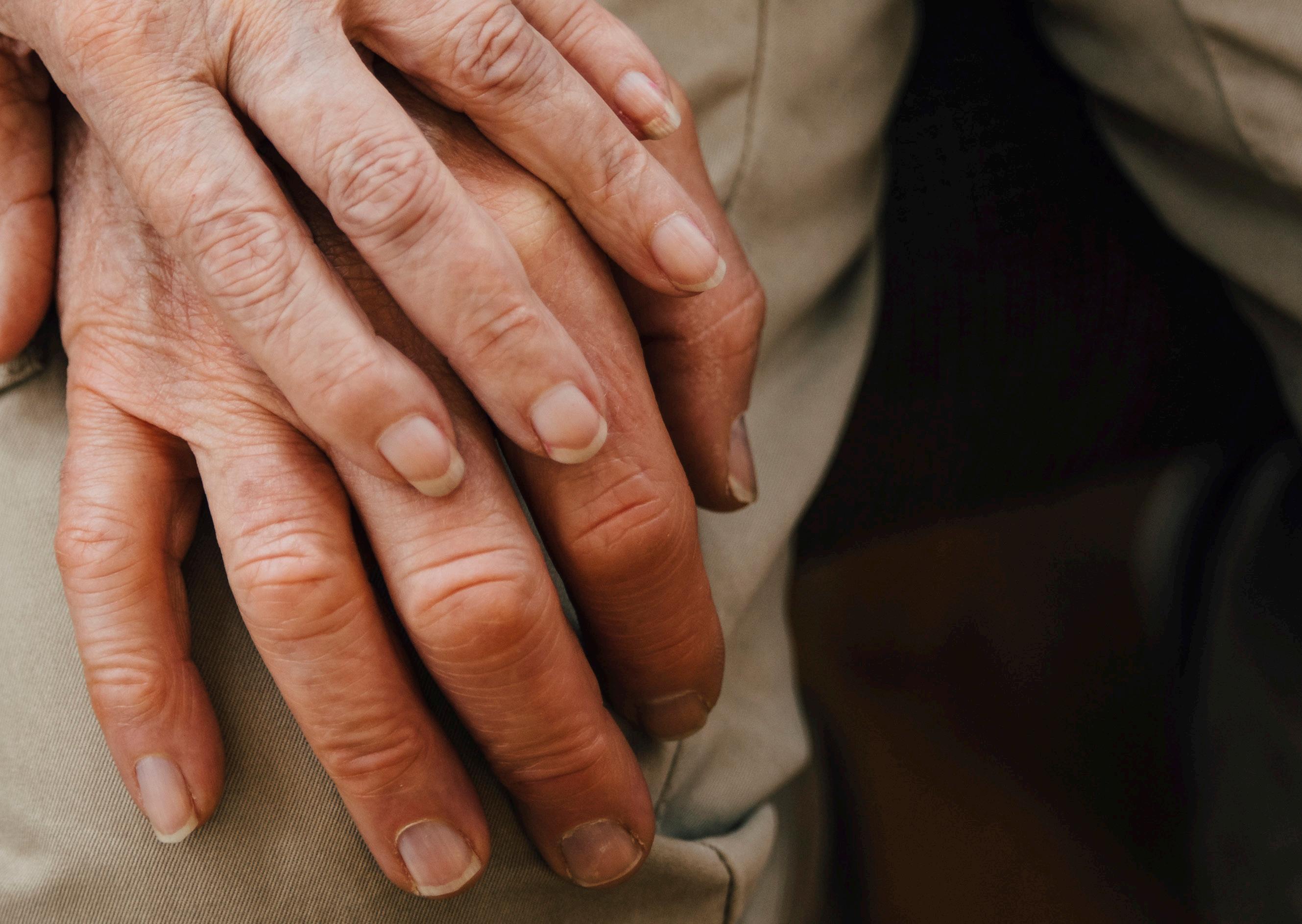
We will all experience a period of decline if we're fortunate enough to live into old age. And just as Growing Bolder works to rebrand
aging for active adults from a time of simply loss and limitation to one that can be filled with passion and purpose, we also need to redefine what's possible for the very old: the fragile, the weak, and those with all forms of dementia, Parkinson's or other diseases, as well as what is possible for those caring for them.
Far more can be done to take advantage of what remains instead of focusing solely on what's been lost. Caregiving can be frustrating at best and devastating to our health, finances and relationships at its worst. But it can also be one of life's greatest blessings. Regardless of where you are in the process, there are great resources available to help caregivers take better care of themselves, their loved ones and enjoy the rewards of caregiving.
37GROWING BOLDER / NOVEMBER 2022 DIGEST
7 Ways to Help Decrease or Manage Caregiver Stress
→ Learn ways to better help a loved one. Feeling more confident in one’s abilities can help improve overall outlook. Caregivers can get help through the Florida Blue Community Specialists at a local Florida Blue Center or by calling 877-352-5830.

→ Find local caregiving resources. Caregivers can visit the Florida Council on Aging website to connect to local Agencies on Aging.
→ Join a support group for caregivers. There are many online support groups. Go here to find resources in your area of Florida.
→ Ask for and accept help. Dividing up tasks and making a list help others see what needs to be done.
→ Set Limits. Navigating family dynamics can be difficult. Learn some tips from Florida Blue Medicare partner, Carallel.
→ Get organized. There’s a helpful booklet to help manage medical information at FloridaBlue.com/caregiver.
→ See your doctor for regular checkups. Make sure to tell your doctor or nurse you are a caregiver and tell them about any symptoms of depression or sickness.
GROWING BOLDER / NOVEMBER 2022 DIGEST38
Enrolling in a Medicare Advantage plan can be an investment in your health and the health of your loved ones. Not only will you get preventive care at no cost, but you’ll also get the benefits that matter most, like vision, dental and hearing, and unexpected extras, like help around the house, support for caregivers, rides to the doctor and pharmacy at no extra cost, and more. Florida Blue Medicare members with a Medicare Advantage (MA) plan also have access to:
Papa, which offers 60 hours/year of in-home companion care and support via their Pals program — an $1,800 value in extra support services.
Carallel, which provides advice, support, and resources online and over the phone from a highly credentialed team of Care Advocates to listen and problem solve, coach and create caregiver support plans and solutions.

Simple things like consistently sleeping well, eating well and moving your body are important as well. Find pointers on how to improve each:
Need more support? Talking to a mental health professional can make the difference between feeling lost and overwhelmed and experiencing a sense of calm.
→ Download meQuilibrium, an app available that helps users build stress management and resilience. Most members have this at no extra cost with their Florida Blue plan.


→ Visit FloridaBlue.com/answers/ your-mental-health-matters for more resources.
Florida Blue and Florida Blue Medicare are Independent Licensees of the Blue Cross and Blue Shield Association. We comply with applicable Federal civil rights laws and do not discriminate on the basis of race, color, national origin, age, disability, or sex. For more information visit floridablue.com/ndnotice. © 2022 Blue Cross and Blue Shield of Florida, Inc., DBA Florida Blue. All rights reserved.
39GROWING BOLDER / NOVEMBER 2022 DIGEST
Y0011_ 112327 2022_M Getting enough sleep Eating healthy foods Exercising

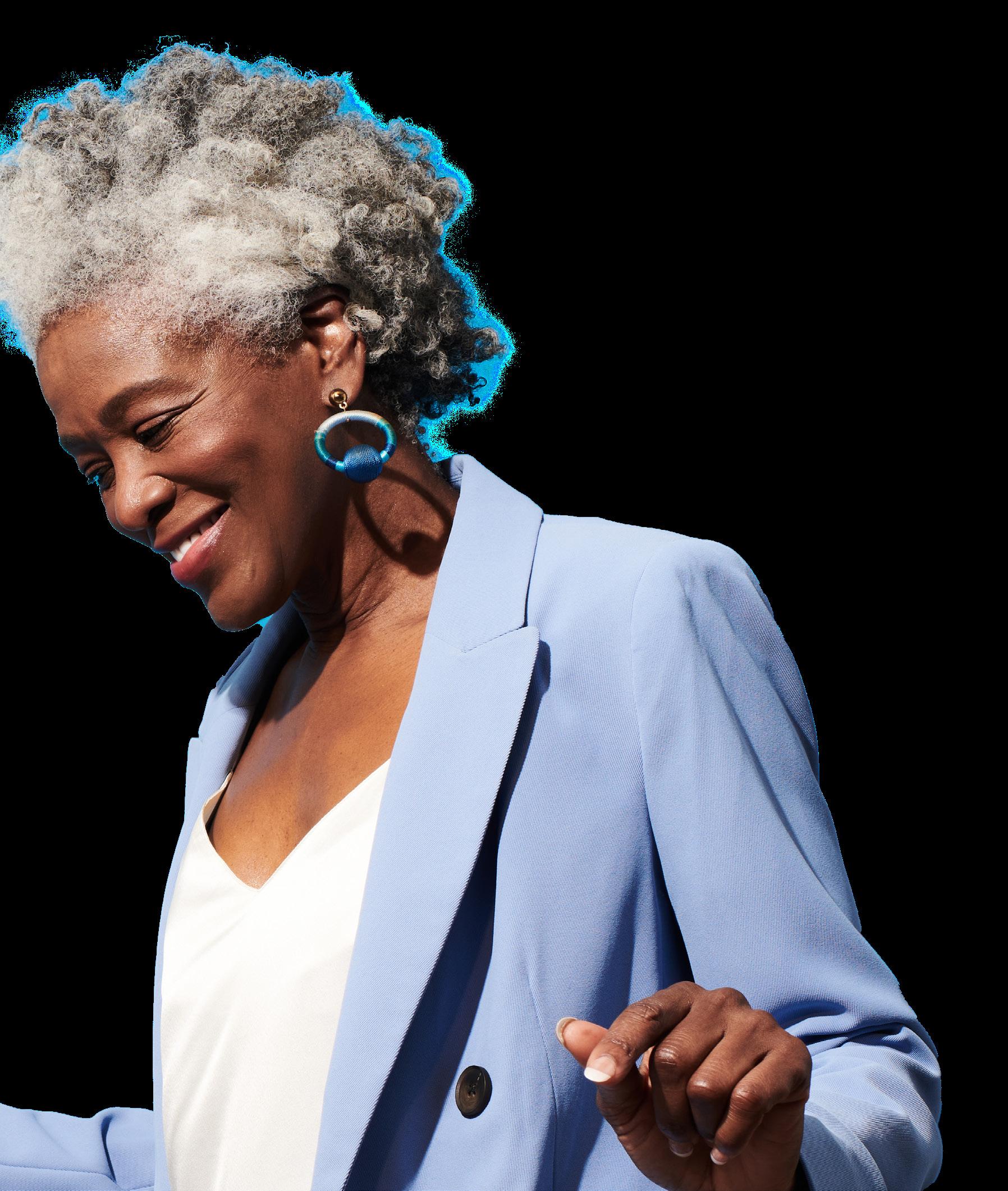
64& SO MUCH MORE! growingbolder.com/Medicare to download your free, easy to understand guide to Medicare. To speak to a representative call 1-844-396-2579. MEDIC ARE Florida Blue and Florida Blue Medicare are Independent Licensees of the Blue Cross and Blue Shield Association. ©️2022 Blue Cross and Blue Shield of Florida, Inc. DBA Florida Blue. All rights reserved. Y0011_101935 R1 2020_C




































 Photos courtesy of Ryan Beck
Photos courtesy of Ryan Beck














































